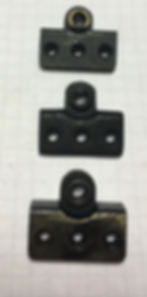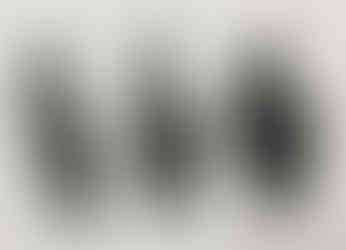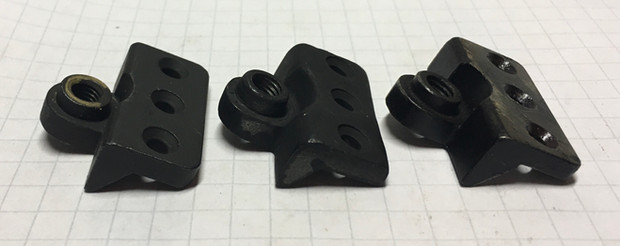No4T Scope Bracket Mounting Pads - A study in precision.
- artiozen
- Dec 29, 2019
- 3 min read
Updated: Dec 14, 2021
As with other posts, Ill try not to repeat the bulk of common information available in books and the internet and instead provide my observation and perspectives on the originals and reproductions from an Engeer's perspective.
The flood of Malaysian reproductions have certainly received poor reviews by experts, meanwhile the market supply of original pads that have been stripped of surplus scrapped No4Ts has dried up. There have been other reproduction runs made around the world also at various price points. Let's see what it takes to use any of them:
The front pad has a distinct "spigot" which fits into a bore on the scope bracket to locate the scope in collimation over the bore. The flat face of the spigot is the "Y" datum to locate the bracket and the scope - the thickness of the pad now being the control dimension to put this in relation to the bore location. The diameter of the spigot and the threaded screw in its center provide a means of pivoting around this Y axis setting - this allows the rear pad to control the X axis or elevation setting for the scope bracket.
The front pad has a distinct "spigot" which fits into a bore on the scope bracket to locate the scope in columniation over the bore. The flat face of the spigot is the Y datum to do this - the thickness of the pad now being the control dimension to put this in relation to the bore location. The diameter of the spigot and the threaded screw in its center provide a means of pivoting around this Y axis setting - this allows the rear pad to control the "X" axis or elevation setting for the scope bracket.
In this photo, the real front pad (Bottom) is compared to a Malaysian reproduction (Top) and a Canadian production item commissioned by a retired armorer (Middle).
In use I have found that the spigot face and the rear mounting face of the pads needs finishing flat on a diamond hone - just a touch will bring even shiny surfaces. The rear of the pads usually shows high spots around the threaded holes due to machining deformation - having the back of the pad become a little flatter has to help solder adhesion (meanwhile the Canadian Armorer advises that their rifle pads were not soldered - I leave space here to find or provide photo evidence of such).

The flood of Malaysian reproductions have certainly received poor reviews by experts, meanwhile the market supply of original pads that have been stripped of surplus scrapped No4Ts have dried up. There have been other reproduction runs made around the world also at various price points. Lets see what it takes to use any of them:
In use I have found that the spigot face and the rear mounting face of the pads needs linishing flat on a diamond hone - just a touch will bring even shiny surfaces. The rear of the pads usually shows high spots around the threaded holes due to machining deformation - having the back of the pad become a little flatter has to help solder adhesion.
When checking for a workable pad for the subject bracket (real or reproduction), the ability to take metal off to make fine adjustments is paramount - this means that the scopes point of aim should be a little to the left of the bore, (or achieved point of impact) so that metal can be removed from the spigot mating faces to center the bore and scope axies. I've found that the 0.17X" pad thickness is enough to achieve this so far on real H&H rifle repairs and when producing replica rifle set ups. There seems to be more variety in the mating spigot face on the brackets so if necessary switch / optimise the bracket used for best fit.
More to come!





